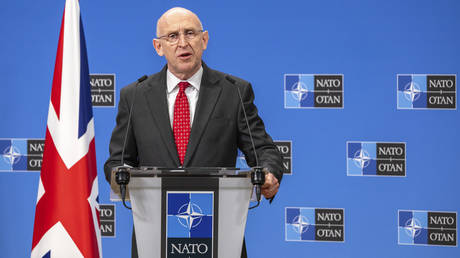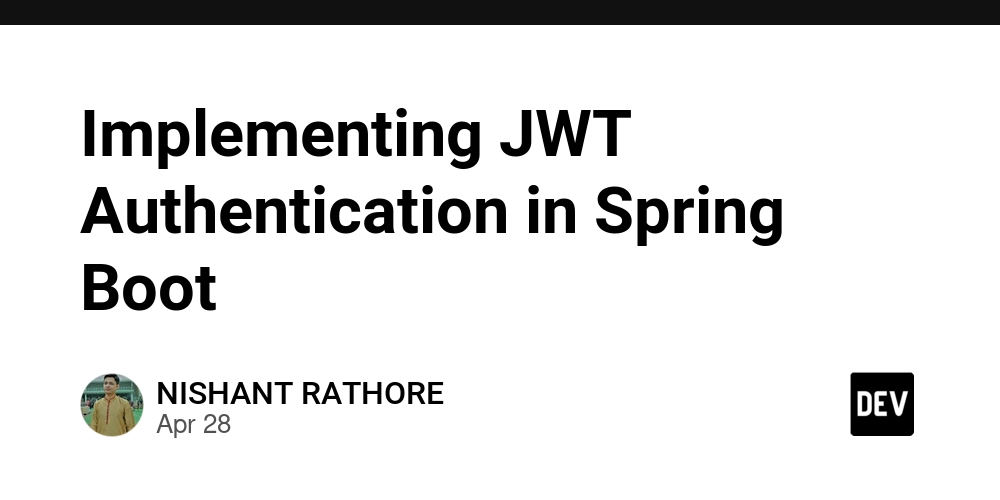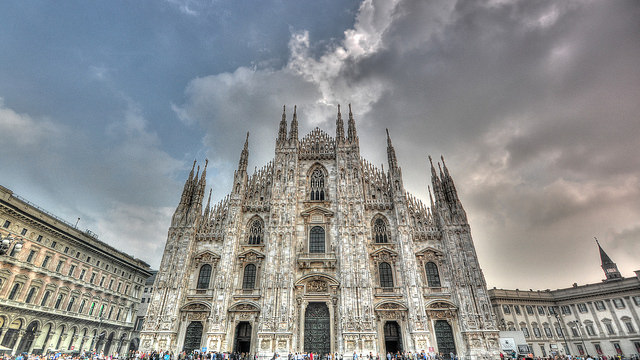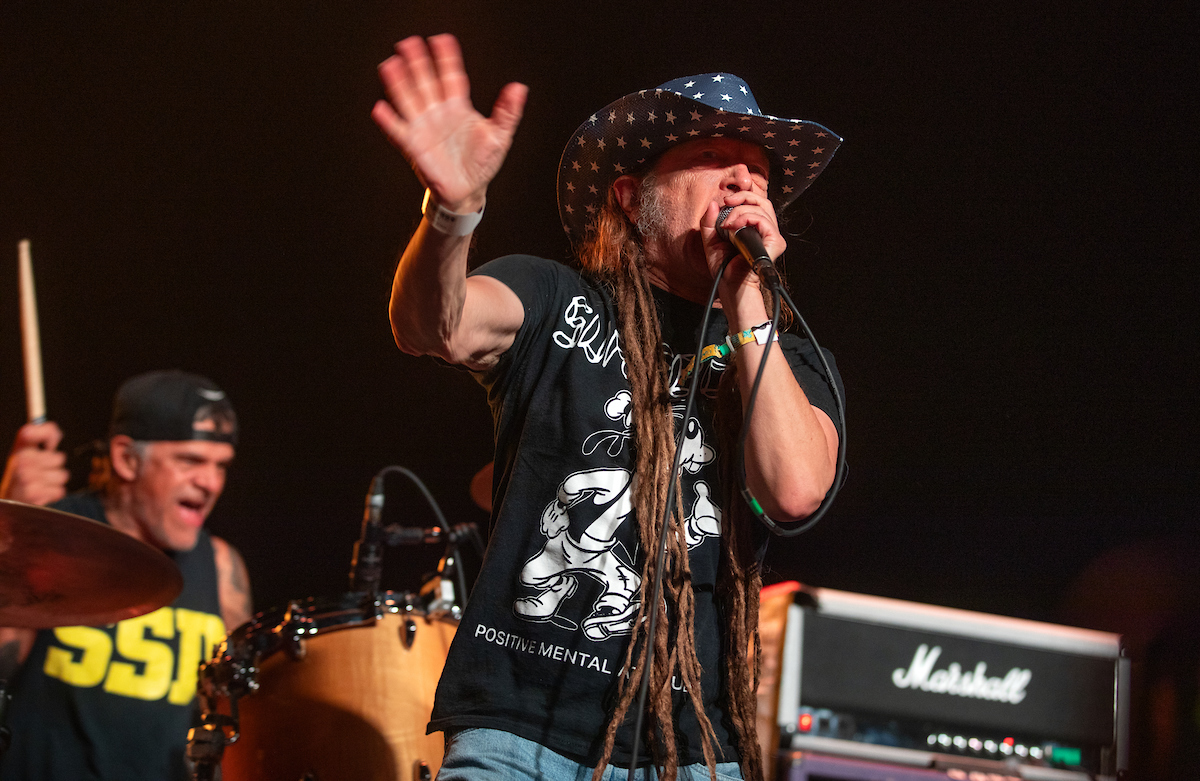Unions’ awkward tariff dilemma
President Donald Trump’s tariffs have drawn a lot of opposition — from economists, businesses, Wall Street, and the majority of Americans. Yet Trump has received support from a seemingly unlikely source: Shawn Fain, president of the United Auto Workers (UAW) union, who staunchly backed former Vice President Kamala Harris’s presidential campaign and previously called Trump […]


President Donald Trump’s tariffs have drawn a lot of opposition — from economists, businesses, Wall Street, and the majority of Americans.
Yet Trump has received support from a seemingly unlikely source: Shawn Fain, president of the United Auto Workers (UAW) union, who staunchly backed former Vice President Kamala Harris’s presidential campaign and previously called Trump a “scab.”
“We applaud the Trump administration for stepping up to end the free trade disaster that has devastated working-class communities for decades,” Fain said when Trump announced tariffs on foreign-made cars late last month. “Ending the race to the bottom in the auto industry starts with fixing our broken trade deals, and the Trump administration has made history with today’s actions.” (The UAW did not respond to a request for an interview.)
He’s not the only labor leader who supported tariffs. The International Brotherhood of Teamsters, one of the country’s largest labor unions, also endorsed Trump’s policy, going so far as to support not just specific levies but across-the-board tariffs. (A spokesperson told Newsweek that the union is hopeful about the tariffs’ long-term effects.) But that doesn’t mean all unions or their members are enthused. Other leaders and rank-and-file members have criticized the president’s blanket approach to import tax. And Liz Shuler, the president of AFL-CIO, a federation of unions in the United States, issued a statement criticizing Trump’s overall policy.
Fain himself has since qualified his praise. “We support use of some tariffs on automotive manufacturing and similar industries. We do not support tariffs for political games about immigration or fentanyl,” he said in an address to UAW members after Trump announced his full tariff plan earlier this month. “We do not support reckless tariffs on all countries at crazy rates.”
The mixed reviews that tariffs have received from unions reflect the awkward position some have found themselves in. For decades, unions, particularly those representing manufacturing workers, have argued against free-trade agreements and in favor of more protectionist policies, including tariffs, which they believe will help save American jobs in their industries. And now, the president of the United States is supporting that vision.
The problem is that Trump’s tariffs will be harmful to the economy and will likely hurt the working class most — the people, in other words, who unions aim to represent. So where does this leave the long-standing union talking point that tariffs would be good for American workers?
The fight against free trade
Manufacturing jobs in the United States have been declining for decades, and free trade — where countries can export and import goods without restrictions — is often said to be the culprit. In particular, the North American Free Trade Agreement (NAFTA) gets much of the blame for lost jobs. Trump’s tariffs might be “chaotic,” as Fain told NPR earlier this month. “But, you know, we’ve sat here for the last 30-plus years, with the inception of NAFTA back in 1993–’94, and watched our manufacturing base in this country disappear.”
NAFTA eliminated trade barriers between the US, Canada, and Mexico. Since it took effect, many American factories moved to Mexico for cheaper labor — a financially appealing option for companies that could then produce goods for lower costs without having to worry about paying tariffs. Between 1997 and 2022, an estimated 70,500 US manufacturing establishments closed. Critics of the agreement claim that this dynamic has forced US-based manufacturing employees to accept lower wages out of fear their factories would relocate south of the border.
That outcome is why unions opposed NAFTA from the start. As the agreement was being negotiated, labor unions tried to stop it and the then-president of AFL-CIO called the agreement a “poison pill.”
Estimates vary on how many jobs have actually been lost. About 700,000 positions were eliminated directly as a result of NAFTA, according to the Economic Policy Institute, and many more as a result of other trade agreements. You can see the manufacturing industry’s decline reflected in union membership. In the 1970s, UAW had a high of 1.5 million members. By 2023, the union had fewer than 400,000 members.
As a result, unions see NAFTA and other free trade agreements as a roadblock to higher wages and long-term job security, which is why they have often advocated for more protectionist policies.
Unions challenged the free-trade consensus
In the post-NAFTA era, the prevailing consensus among economists is that free trade has enjoyed broad political support from both Democrats and Republicans in Washington, while free trade might hurt some industries, its benefits outweigh the costs. Overall, free trade is still largely viewed as a driver of global economic growth.
But free trade doesn’t mean fair trade. After China joined the World Trade Organization in 2001 — ramping up trade between the US and China — the barrage of Chinese imports into the United States cost Americans, by some estimates, millions of jobs.
As workers’ wages and job prospects struggled, evidence of the downsides of trade liberalization — particularly the widening pay gaps between workers and bosses — was hard to ignore, even by some free trade proponents. “The combination of changing patterns of trade, in which more activity takes place with low-wage economies, and new research has altered economic thinking on trade,” former Treasury Secretary Lawrence Summers wrote in 2015. “The consensus view now is that trade and globalization have meaningfully increased inequality in the United States by allowing more earning opportunities for those at the top and exposing ordinary workers to more competition, especially in manufacturing.”
When President Barack Obama rallied to get support for the Trans-Pacific Partnership — a trade agreement between countries in the Pacific Rim — in 2015, he faced fierce opposition from unions but also skepticism from politicians, some of whom had long railed against free trade and others who changed their minds. Trump famously opposed the policy, as did Sen. Bernie Sanders during their 2016 presidential campaigns. And Hillary Clinton, who initially praised the proposed accord, came out against it during that election season.
That’s not to say that unions always oppose any kind of trade deal. The United States-Mexico-Canada Agreement, which Trump negotiated to replace NAFTA during his first term, received union support because it included better labor protections than its predecessor. But in general, union opposition to unfettered free trade has continued.
“In truth, our trade deals were not really trade deals; they were investment deals. Their goal was not to promote America’s exports — it was to make it easier for global corporations to move capital offshore and ship goods back to America,” Richard Trumka, the former president of AFL-CIO, said in 2015. “The logical outcome was trade deficits and falling wages, and that’s exactly what we got.”
For unions, tariffs were a part of the answer to failures of free trade along with other protectionist policies. But to free trade proponents, tariffs represent a break from consensus and threaten to break down trade relations across the globe.
Where this all leaves unions
While the way Trump has implemented tariffs has been irresponsible, the fact that he has is viewed as a step in the right direction. “Even though in [Fain’s] heart of hearts he realizes that Trump has rolled these [tariffs] out in a — pick your adjective — disjointed, sloppy, incoherent manner, he believes that a lot more needs to be done to protect and preserve manufacturing in the US,” said Steven Greenhouse, a senior fellow at The Century Foundation. “He rightly says that free trade has been very bad for manufacturing in the US. And in Fain’s mind, an effective way to rebuild manufacturing is through tariffs.”
Tariffs can indeed be part of a solution to bolster manufacturing industries in the United States, as long as they’re implemented strategically and coupled with a more coherent vision for boosting American industry, which would include subsidies and investments aimed at spurring growth in certain sectors. That’s how former President Joe Biden imposed tariffs.
But Trump’s policy is too broad, inconsistent, and lacking in clear objectives. And if the pause on the tariffs does end up being temporary, his policy could throw the United States into a recession, threatening all kinds of jobs, including those in manufacturing sectors.
So while some unions and their members might support the idea of tariffs to help shore up certain industries, it’s not clear that Trump’s policy will get Republicans more union support in the long run, especially if the forecasts about how Trump’s tariffs would impact the economy turn out to be true. And at the end of the day, it’s difficult to see how Trump’s blanket tariff policy will, on its own, revive American manufacturing. As my colleague Dylan Matthews wrote, the American economy has changed, transitioning from manufacturing to services, and the idea that we can reverse that trend is a “false promise.”
“I fear that the horses are out of the barn,” Greenhouse said. “It’s really hard to get back those millions of manufacturing jobs.”
This story was featured in the Within Our Means newsletter. Sign up here.


































































